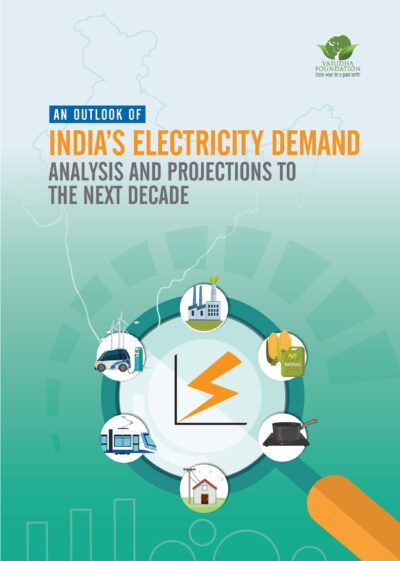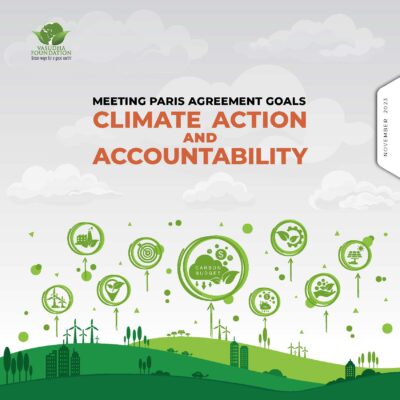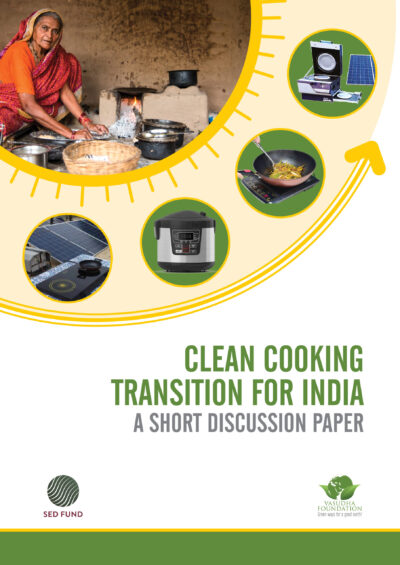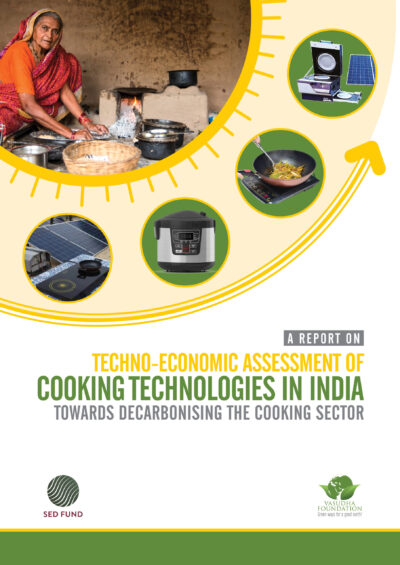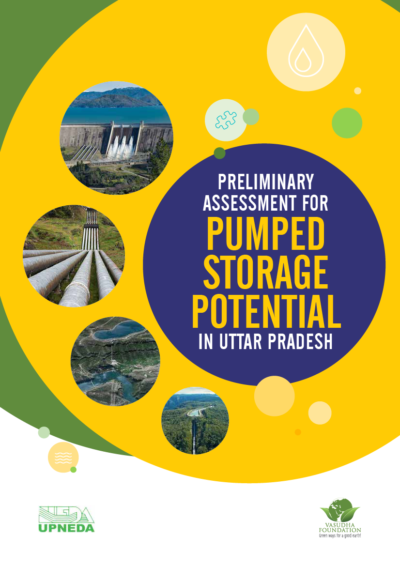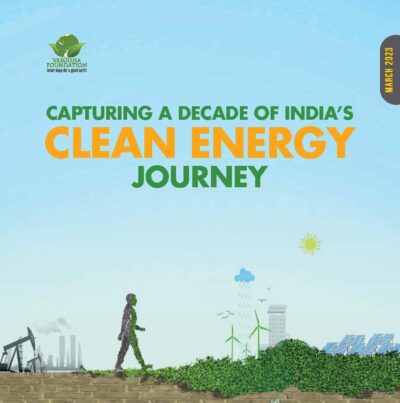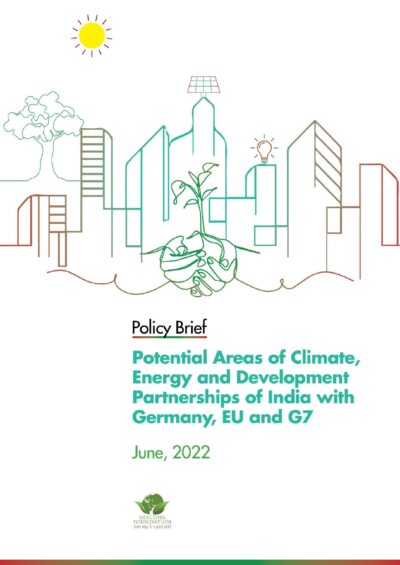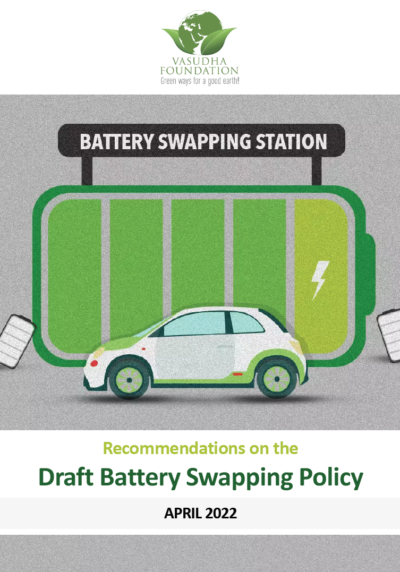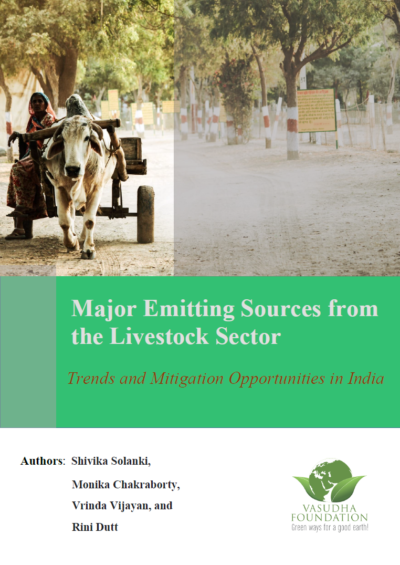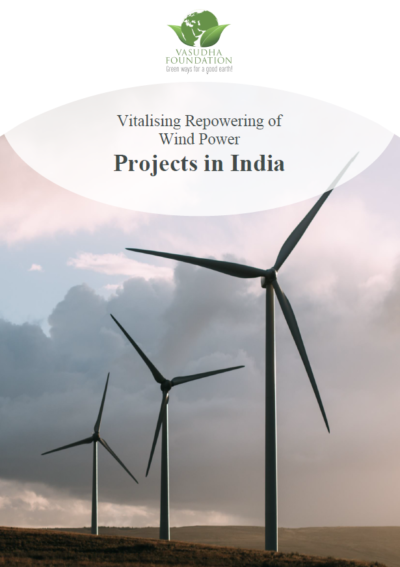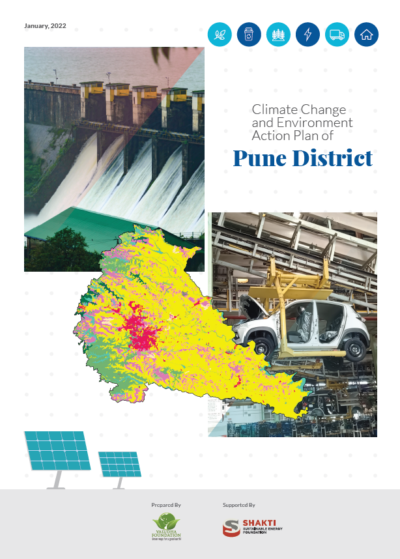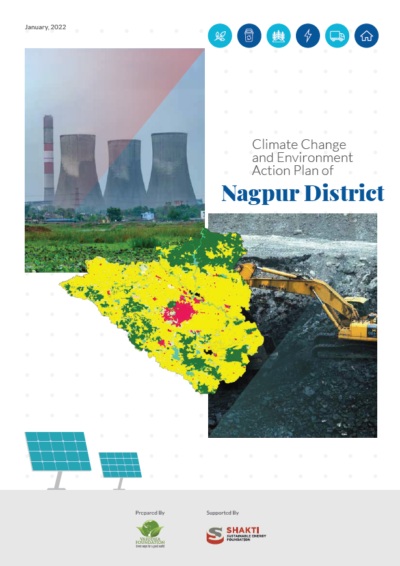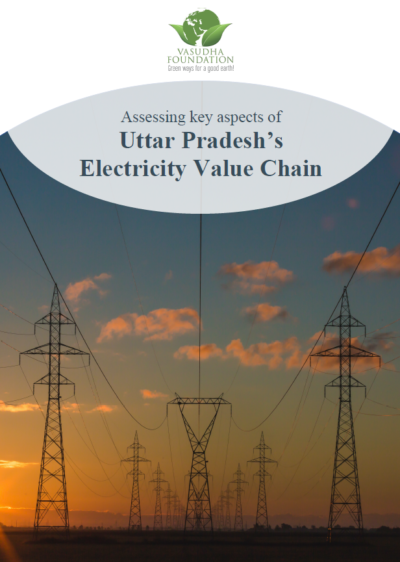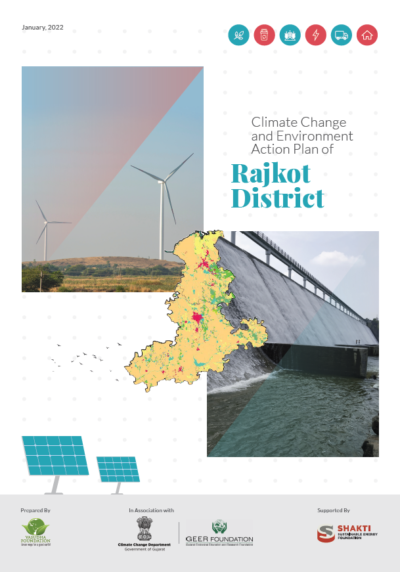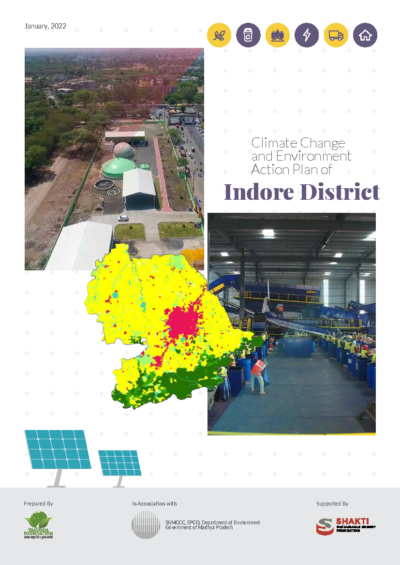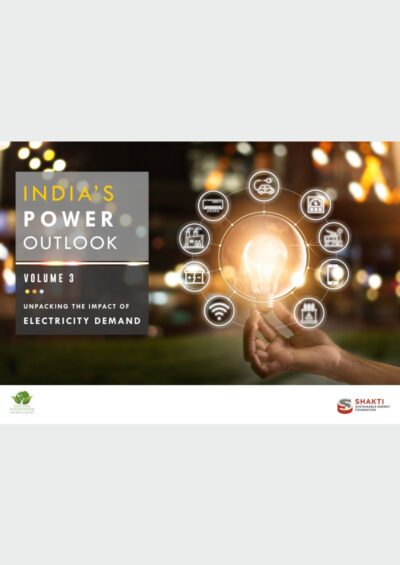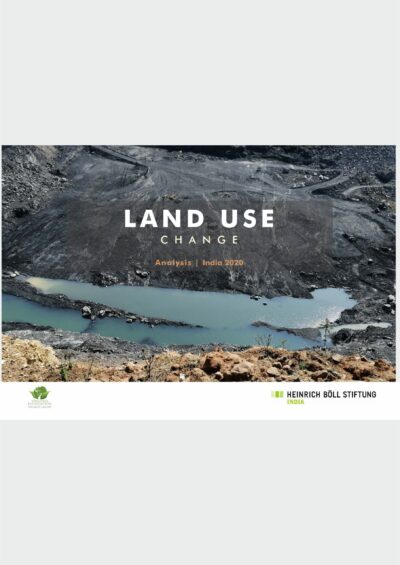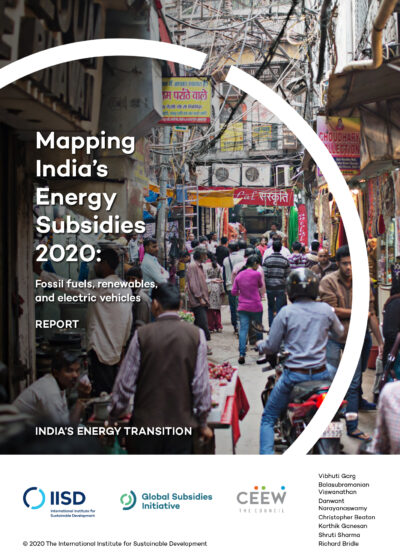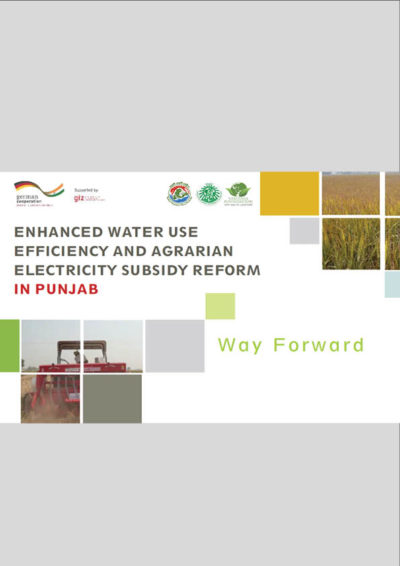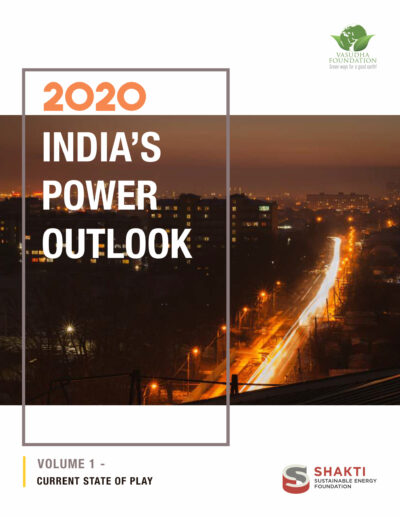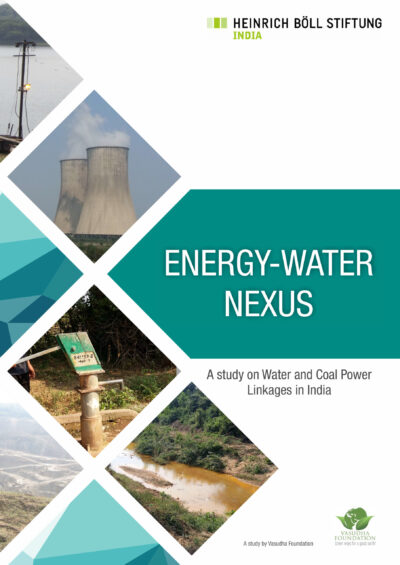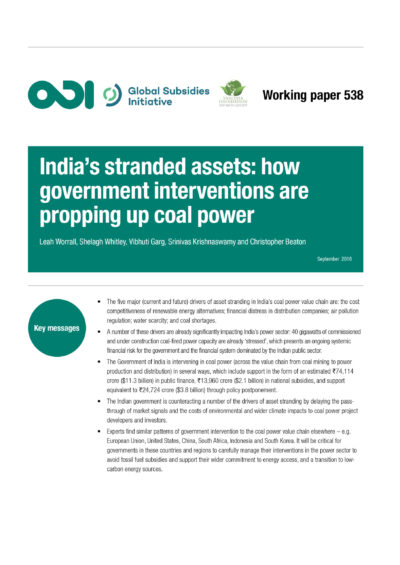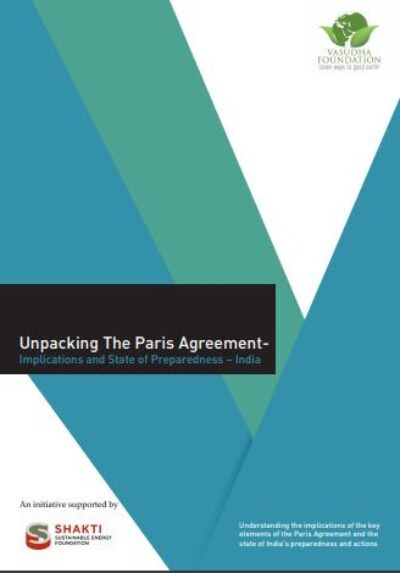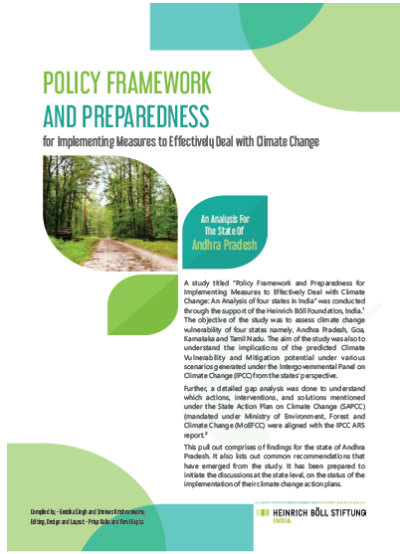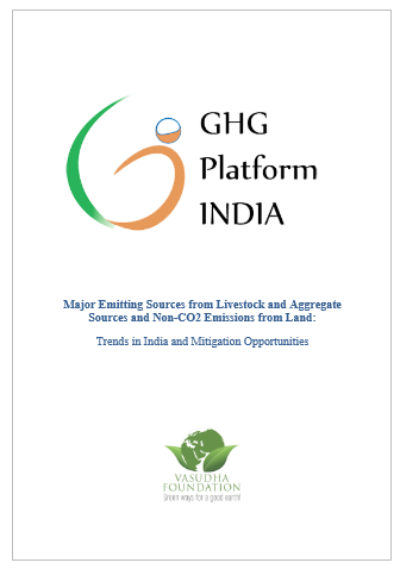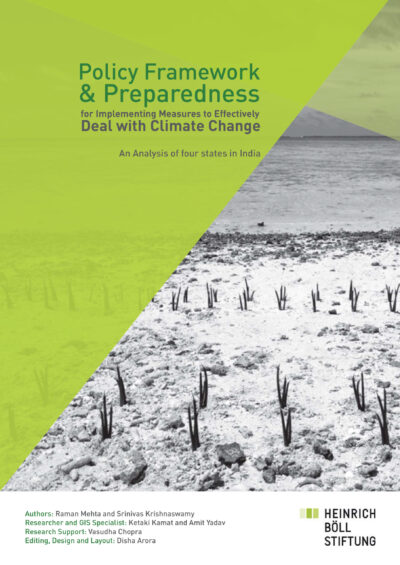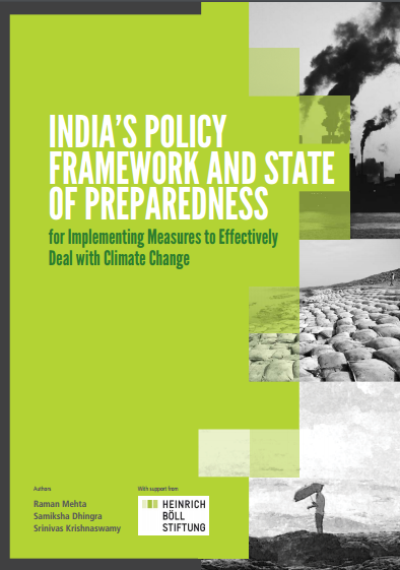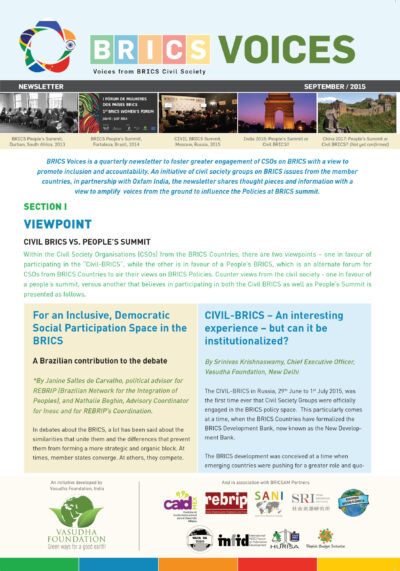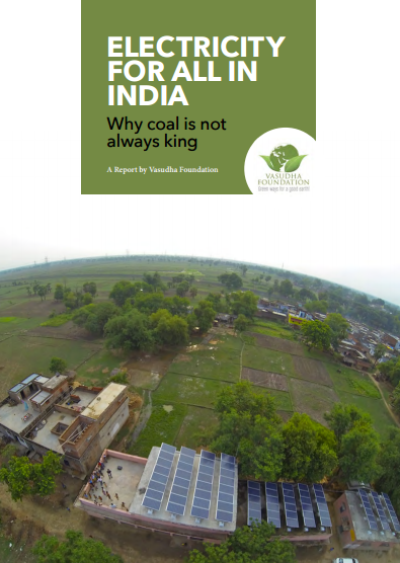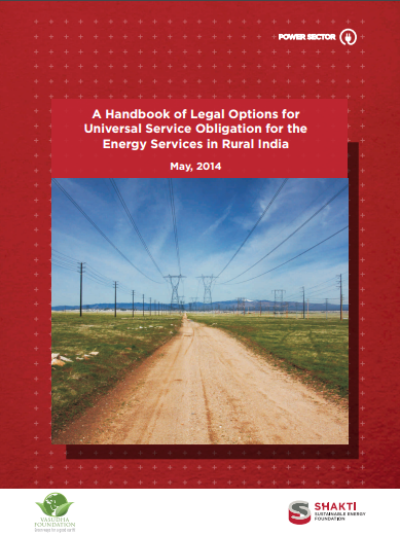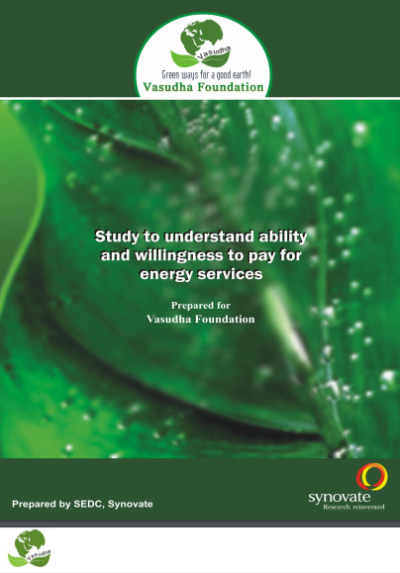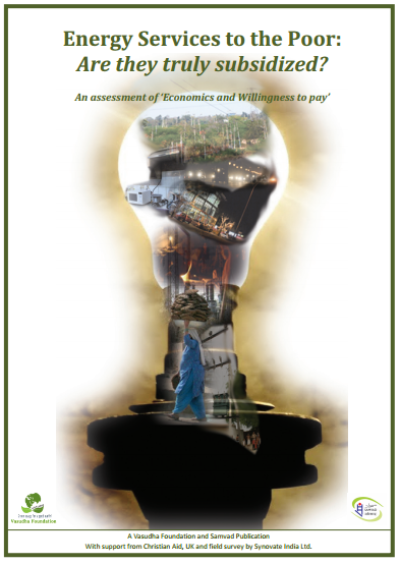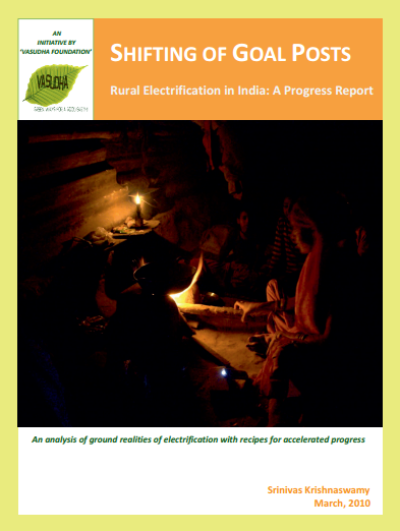India’s Energy Overview
Capturing Monthly/Yearly Data and Analysis of Key Areas of India’s Energy Sector – Primary Energy Mix in India; Per-Capita Energy and Electricity Consumption; India’s Electricity Capacity Mix (Utility-scale); India’s Electricity Addition in last 5 years; State-wise Solar Installed Capacity; State-wise Wind Installed Capacity RE Potential and Installed Capacity
MOREA People-First Approach to Fair and Equitable Land Use Transitions
This paper dwells on certain key sectors where land use change can be expected or is required, namely- renewable energy expansion, agriculture and nature-based solutions. Through international and national case examples of inclusive and fair practices in these key sectors, the paper explores possible approaches for facilitating the transition in these sectors while minimizing the
MOREEnabling a Just Transition for India’s Truck Driving Partners Amid the Adoption of Zero Emission Trucks
The trucking industry plays a fundamental role in India’s economy, forming the backbone of logistics and goods transportation across the nation. Over 70 percent of the domestic freight is catered to by road via trucks. Concomitantly, India is home to the world’s fourth-largest truck market, with about 4 million trucks on the roads and a
MORESupporting Small-to-Medium Fleet Operators in India to Adopt Zero Emission Trucks
India’s economy, as the fastest-growing major economy in the world, has set its sights on becoming a developed nation by the centenary of its independence. A pivotal component in achieving this vision is the transport sector, which underpins various facets of economic growth, from industrial expansion to the efficient movement of goods and people. Within
MOREWhite Paper – The Case for AGRIPV Implementation in Uttar Pradesh
As India rapidly advances in the deployment of solar PV capacity, the predominant focus has been on ground mounted photovoltaic (GM-PV) projects, constituting approximately 77.3%; of the total 89.43 GW of solar PV deployment2. Despite the significant advantages of GM-PV projects over other renewable or fossil fuel electricity generation technologies, they encounter certain limitations. These
MORENavigating a People-centric Approach for India’s Shift to E-mobility
This Briefing Paper serves as a foundational step towards understanding and implementing a People-centric Approach specifically for the road transport sector in India. Its core focus lies in identifying the people-centric nodes that will be significantly impacted. Further, it will define the indicators that should guide a transition in the road transport sector and explore
MOREKerala GHG Inventory Report (SAPCC 2.0 Implementation)
The Kerala GHG inventory report provides a comprehensive overview of the anthropogenic Greenhouse Gas (GHG) emissions of the State, developed as a baseline for climate change mitigation actions and also with an aim for priority policy aid. The report is part of the implementation blueprint for the State Action Plan on Climate Change (SAPCC 2.0),
MORERecommendations on the Draft Guidelines for Implementation of PM-Surya Ghar
On April 16, 2024, the Ministry of New and Renewable Energy (MNRE) unveiled the preliminary guidelines for the implementation of PM-Surya Ghar: Muft Bijli Yojna in the Residential Sector. Since its announcement, this scheme has sparked considerable interest. These guidelines elaborate on numerous crucial details essential for the seamless implementation of the scheme. In this
MOREExploring Deep Electrification Pathways to Abate Emissions from Cement Manufacturing in India
This report primarily focuses on decarbonisation pathways within cement manufacturing, which constitutes about 95% of emissions. The main contributors to emissions include raw material processing,heat generation, and electricity production. The report focuses on green hydrogen integration, plasma generators powered by renewable electricity, and biomethane production. Moreover, the report examines case studies of emerging technology providers,
MOREFast-tracking Decarbonisation in Fertiliser Production through Green Hydrogen Innovations
In this report we look into the production pathways of the majorly produced fertilisers in India – Urea, DAP, and Complex Fertilisers (NPK). We then delve into the sustainable fertiliser production routes. Two categories of production leading to low-carbon fertilisers, and renewable fertilisers are examined. Further, as Urea is the most produced fertiliser in India
MOREAn Outlook of India’s Electricity Demand Analysis and Projections to the Next Decade
Following independence, electricity consumption has increased from a mere 16 kWh per capita in 1947 to 1208 kWh in 2020 (Hindustan Times, 2020) indicative of economic growth, increased electricity access due to provision of affordable electricity to all households, reduced electricity shortages, and continued transition to the use of emerging technologies. The changing economic landscape
MOREManaging Peak Electricity Demand in the Indian Electricity Sector
In recent years, the Peak Electricity Demand in India is increasing at a rate higher than that of the total electricity consumption. Over the past decade, India’s Peak Electricity Demand has risen from 128 GW in 2011 to 216 GW in 2022, exhibiting an average growth rate of 5 percent (5.4 percent till 2019). The
MOREAn Overview of Southern States and their Recent Policy Developments on Decarbonising the State Economy
Here is an overview of the southern states and the recent policy developments on decarbonising the state economy. This primer for the southern states was released during the workshop on ‘Development of Decarbonisation Strategies in Tamil Nadu’.
MOREIndia’s Power Outlook Series – Volume 10 | Meeting Paris Agreement Goals – Climate Action and Accountability
The Power Outlook Series developed by Vasudha Foundation provides an overview of the current status of India’s power sector with a focus on significant and emerging developments. The outlook series aims to develop a more informed understanding of the power sector and act as a tracking tool for stakeholders. Volume 10 meticulously examines past climate
MOREAn Overview of Western States and their Recent Policy Developments on Decarbonising the State Economy
Here is an overview of the western states and the recent policy developments on decarbonising the state economy. This primer for the western states was released during the Stakeholder Workshop on ‘Development of Decarbonisation Strategies in the Indian States’.
MOREClean Cooking Transition for India – A Short Discussion Paper
In October 2022, the Government of India announced the Lifestyle for Environment (LiFE) initiative to encourage individual action to address the challenges of climate change and environmental degradation.1 The LiFE campaign integrates the concept of resource efficiency, circularity, and energy efficiency for individual and community action. It further contributes towards achieving Sustainable Development Goal 7
MOREIndia’s Power Outlook Series – Volume 9 | People-Centric Approach Key to Rapid and Effective Clean Energy Transition
The Power Outlook Series developed by Vasudha Foundation provides an overview of the current status of India’s power sector with a focus on significant and emerging developments. The outlook series aims to develop a more informed understanding of the power sector and act as a tracking tool for stakeholders. ‘People-Centric Approach Key to Rapid and
MOREA Report on Techno-Economic Assessment of Cooking Technologies in India towards Decarbonising the Cooking Sector
The cooking sector in India is one of the sectors where primary fuels used are mostly LPG, PNG, and biomass. Providing energy for cooking purposes is crucial for improving public health, protecting the environment, promoting economic development, and advancing gender equality. Hence, it has been a priority of developmental programs to ensure food and energy
MOREAssessing Deep Electrification as a Vector to Abate Emissions in the Transport Sector
The transport sector in India is one of the fastest-growing sectors in our economy estimated to grow at a CAGR of 5.9 percent1. It is also the third-highest emission-intensive sector in the country. According to a prominent emission repository in 2018, the transport sector accounted for 12.38 percent of total emissions arising from fuel combustion
MOREPreliminary Assessment for Pumped Storage Potential in Uttar Pradesh
Pumped storage is a reliable and established energy storage technology that is essential for ensuring grid stability. It offers a range of benefits, including the capacity to store large amounts of energy for extended periods and serve as a backup during power outages. Some pumped storage systems can achieve impressive energy conversion rates of up
MOREFinal Energy Estimation for a Net-Zero Emissions India by 2070 via Deep Electrification Pathway
India’s pathway to Net Zero must be led by a successful and just energy transition. To tackle the energy transition challenge, electrification emerges as a critical energy vector to foster a clean energy transition. Electrification brings forth a set of benefits that go well beyond GHG emission reduction. Increased influx of renewable sources in our
MOREIndia’s Power Outlook Series – Volume 8 | Capturing a Decade of India’s Clean Energy Journey
India’s Power Outlook Series – Volume 8 The Coffee Table Book ‘Capturing a decade of India’s Clean Energy Journey’ is the eighth edition of the India Power Outlook Series Initiative by Vasudha Foundation. The Power Outlook Series Initiative is an endeavor to provide the current status of India’s power and energy sector with a focus
MOREBuilding a case for a Hydrogen Certification framework in India
India’s energy transition is viewed with keen interest globally. It has witnessed high economic growth over the past two decades, and the energy demand is further expected to soar to be the highest in the world in the coming decades. Thus, India’s net zero pathway encompasses green hydrogen as a critical vector to sustainably support
MOREWhitepaper on Prioritising Key Sectors in the Indian Economy for Deep Electrification
India has committed to reducing the Greenhouse Gas (GHG) emission intensity of its Gross Domestic Product (GDP) by 45 percent below 2005 levels by 2030 at the COP 26 conference held in Glasgow. It aims to achieve the net-zero target by 2070. Several econometric studies have established that energy usage by a country has a
MOREPolicy Brief | Potential Areas of Climate, Energy and Development Partnerships of India with Germany, EU and G7
The new German government has identified climate, energy and development partnerships as a particularly relevant instrument of German foreign climate policy for the implementation and achievement of the goals of the Paris Climate Agreement and the SDGs. Following the example of the recently announced South Africa Just Energy Transition Partnership, other Just Energy Transition Partnerships
MOREIndia’s Power Outlook Series – Volume 7 | Building Power Sector Resilience Under Extreme Weather Conditions
The Power Outlook Series developed by Vasudha Foundation provides an overview of the current status of India’s power sector with a focus on significant and emerging developments. The outlook series aims to develop a more informed understanding of the power sector and act as a tracking tool for stakeholders. ‘Building power sector resilience under extreme
MOREBriefing Paper | Examining International Green Finance Flows for Renewable Energy in India
Vasudha’s new Briefing Paper ‘Examining International Green Finance Flows for Renewable Energy in India‘ discusses the state of green finance in India. It examines the international aid for Renewable Energy (RE) while diving deeper into India’s partnership initiatives with the world, the international finance trends for renewable energy in India such as major investments and
MOREIndia’s Power Outlook Series – Volume 6 | A Compendium of the Latest Clean Energy Initiatives
The Power Outlook Series, developed by Vasudha Foundation, provides an overview of the current status of India’s power sector with a focus on significant and emerging developments. The series aims to develop a more informed understanding of India’s power sector and act as a tracking tool for stakeholders. The latest edition entitled ‘A Compendium of
MORERecommendations on the Draft Battery Swapping Policy
Keeping the EVs sector’s fast charging needs in mind, the Government of India (GOI) expressed interest in battery swapping technology in the FY 2022-23 budget session . Following this, a draft battery swapping policy wasreleased on April 20, 2022. This is a holistic policy that aims to catalyse the large-scale adoption of EVs by ensuring
MOREBriefing Paper | Major Emitting Sources from the Livestock Sector: Trends and Mitigation Opportunities in India
The Agriculture, Forestry and Other Land use (AFOLU) sector comprises of greenhouse gas (GHG) emissions from agriculture practices, livestock, and changes in forest and land use. GHG emissions from livestock sub-sector includes emissions due to enteric fermentation in herbivores and manure management practices. Between 2012 and 2019, GHG emissions from livestock sub-sector grew at a
MOREBriefing Paper | Vitalising Repowering of Wind Power Projects in India
This paper examines the WPPs funded by the Government of India since 1986. It aims to analyse projects across 40 locations on parameters like number of turbines, the capacity of turbines, make and model, year of commissioning/age of the plant, etc. It also examines the state-level wind policies in order to assess the impact of
MOREClimate Change and Environment Action Plan of Pune District
This Climate Change and Environment Action Plan studies the past, present and the future of the district of Pune from both the climate and policy perspective to know where the district stands in terms of meeting India’s climate commitments. Based on the findings, it evolves concrete recommendations and the way forward for the district collector
MOREClimate Change and Environment Action Plan of Nagpur District
This Climate Change and Environment Action Plan studies the past, present and the future of the district of Nagpurfrom both the climate and policy perspective to know where the district stands in terms of meeting India’s climatecommitments. Based on the findings, it evolves concrete recommendations and the way forward for the districtcollector and other line
MOREAssessing Key Aspects of Uttar Pradesh’s Electricity Value Chain
Traditionally, electricity systems have been concerned with three core principles- to adequately meet demand, toimprove the reliability of the electricity supply, and to provide electricity service. These systems today haveevolved from these mandates. A shift in the design principles across the electricity value chain is observed, toincorporate an expanded set of societal and ecological values.
MOREIndia’s Power Outlook – Volume 5 | India’s 2030 Targets: A Stepping Stone to Net-Zero by 2070
The Power Outlook Series developed by Vasudha Foundation with support fromChildren’s Investment Fund Foundation (CIFF) provides an overview of the currentstatus of India’s power sector with a focus on significant and emerging developments.The outlook series aims to develop a more informed understanding of the power sectorand act as a tracking tool for stakeholders. ‘India’s 2030
MOREClimate Change and Environment Action Plan of Rajkot District
This Climate Change and Environment Action Plan studies the past, present and the future of the district of Rajkotfrom both the climate and policy perspective to know where the district stands in terms of meeting India’s climatecommitments. Based on the findings, it evolves concrete recommendations and the way forward for the districtcollector and other in-line
MOREClimate Change and Environment Action Plan of Ahmedabad District
This Climate Change and Environment Action Plan studies the past, present and the future of the district ofAhmedabad from both the climate and policy perspective to know where the district stands in terms of meetingIndia’s climate commitments. Based on the findings, it evolves concrete recommendations and the way forward for thedistrict collector and other in-line
MOREClimate Change and Environment Action Plan of Indore District
This Climate Change and Environment Action Plan studies the past, present and the future of the district of Indorefrom both the climate and policy perspective to know where the district stands in terms of meeting India’s climatecommitments. Based on the findings, it evolves concrete recommendations and the way forward for the districtcollector and other in-line
MOREClimate Change and Environment Action Plan of Bhopal District
This Climate Change and Environment Action Plan studies the past, present and the future of the district of Bhopalfrom both the climate and policy perspective to know where the district stands in terms of meeting India’s climatecommitments. Based on the findings, it evolves concrete recommendations and the way forward for the districtcollector and other in-line
MOREIndia’s Power Outlook – Volume 4 | Decarbonising the Power Sector: Overview of the Tailwinds & Headwinds
The Power Outlook Series developed by Vasudha Foundation with support from Children’s Investment Fund Foundation (CIFF) provides an overview of the current status of India’s power sector with a focus on significant and emerging developments. The outlook series aims to develop a more informed understanding of the power sector and act as a tracking tool
MOREIndia’s Power Outlook – Volume 3 | Unpacking the Impact of Electricity Demand
The Power Outlook Series developed by Vasudha Foundation with support from Shakti Sustainable Energy Foundation provides an overview of the current status of India’s power sector with a focus on significant and emerging developments. The outlook series aims to develop a more informed understanding of the power sector and act as a tracking tool for
MORELand Use Change Analysis – India | 2020
GIS Mapping and Satellite Image Analysis The purpose of the analysis is to highlight the extent of land use due to coal mining operations, and to drive home the point that with increasing coal mining operations, meeting one of India’s goal of creating additional carbon sinks of 2.5 billion to 3 billion tonnes of CO2
MOREAir Quality Mapping – Analysis | India 2020
GIS Mapping and Satellite Image Analysis The overall objective of the mapping is to draw a clear linkage between coal-fired power plants and coal mining operations to air quality levels in the region. Further, the objective of this mapping exercise is to also add to the discourse on energy transition in India, particularly from coal
MOREIndia’s Power Outlook – Volume 2
India’s Power Outlook – Volume 2 – The Road to Clean Electricity The Power Outlook Series developed by Vasudha Foundation with support from Shakti Sustainable EnergyFoundation provides an overview of the current status of India’s power sector with a focus on significant andemerging developments. The series aims to develop a more informed understanding of the
MOREMapping India’s Energy Subsidies 2020: Fossil fuels, renewables and electric vehicles
IISD’s Global Subsidies Initiative has produced a wealth of information on energy subsidies and their impacts globally and in India. A detailed report, Mapping India’s Energy Subsidies 2020: Fossil fuels, renewables and EVs, provides an analysis of these data and their implications for India’s energy sector ambitions. The report is accompanied by an online data
MOREEnhanced Water Use Efficiency And Agrarian Electricity Subsidy Reform in Punjab
About the Report The project ‘Climate Change Adaptation in Rural Areas-India (CCA-RAI)’ being implemented under the bilateral cooperation of Ministry of Environment, Forest and Climate Change (MoEFCC) and Deutsche Gesellschaft für Internationale Zusammenarbeit (GIZ) GmbH-India, aims to integrate climate adaptation measures into the national and state development planning. It also aims to develop concrete pilot
MORE2020 – India’s Power Outlook – Volume 1
The Power Outlook Series developed by Vasudha Foundation with support from Shakti Sustainable Energy Foundation provides an overview of the current status of India’s power sector with a focus on significant and emerging developments. This series aims to develop a more informed understanding of the power sector and may act as a tracking tool for
MOREEnergy-Water Nexus: A study on Water and Coal Power Linkages in India
Vasudha Foundation with support from Heinrich Boll Foundation embarked on a research study to assess the impacts of water scarcity on coal power generation in India. The data and information for the study were primarily Government Data, sourced from various ministries and agencies, such as the Central Electricity Authority, the Ministry of Power, Central Water
MOREIndia’s Stranded Assets: How Government Interventions are Propping Up Coal Power
India’s stranded assets: how government interventions are propping up coal power • The five major (current and future) drivers of asset stranding in India’s coal power value chain are: the cost competitiveness of renewable energy alternatives; financial distress in distribution companies; air pollution regulation; water scarcity; and coal shortages. • A number of these drivers
MOREUnpacking The Paris Agreement – Implications and State of Preparedness India
The report covers all key elements of the agreement and discusses, while focusing on the key elements of the agreement, the various issues that need further negotiation among parties for being able to agree upon the modalities of implementing the agreement. It covers the implications of the key elements of the Paris Agreement and the modalities
MOREAssessing India’s Preparedness to address Climate Change
A study titled “Policy Framework and Preparedness for Implementing Measures to Effectively Deal with Climate Change: An Analysis of four states in India” was conducted through the support of the Heinrich Böll Foundation. The objective of the study was to assess climate change vulnerability of four states namely, Goa, Andhra Pradesh, Karnataka and Tamil Nadu.
MOREAspects of Estimating Emissions from Land: Issues of Data Availability for Independent Assessments Introduction
The paper examines the data gaps in existing land use and land use change data available from official sources. In addition, a sensitivity analysis of selected states for deriving activity data through independent GIS analysis is also conducted under this study. Further, the paper also discusses the necessity of greater academic work required for more
MOREMajor Emitting Sources from Livestock and Aggregate Sources and Non-CO2, Emissions from Land: Trends in India & Mitigation Opportunities
The paper examines the causes underlying the trends of GHG emissions that emanate from Agriculture and Livestock, including from a state level or regional lens. In addition, the paper also examines the possibilities of various policy interventions to make Indian agriculture and livestock sector more GHG efficient than it is at the moment.
MOREPolicy Wayforward for the New Development Bank_March 2017
Vasudha Foundation in collaboration with Oxfam India and inputs from ASUL, Brazil, conducted a study to compile existing practices and policies of International Financial Institutions with their presence in one or more BRICS countries across six major focus themes. The detailed compilation of the observations is presented in the report titled “Policy Wayforward for the
MOREInfographic: Pre-feasibility Analysis for Shifting from Diesel to Electric Auto-rickshaws in Gurgaon
Sustainable transport was one of the priority areas that was identified in the previous interaction with various stakeholders of the city of Gurgaon. Consequently, the Vasudha team embarked on a pre-feasibility analysis to understand the social requirement of Gurgaon travelers and economic considerations of service providers in Gurgaon. The results of the online and offline
MOREInfographic: Citizen’s Greening Initiatives
This infographic, designed as a part of the project, ‘Preparing Cities to be Climate Resilient- Prioritizing Actions and Identifying Resources’ was prepared to bring to light the green initiatives undertaken by residents themselves, in a residential complex named Nirvana Country in Gurgaon. The residents installed solar photovoltaic panels on their rooftops and became both producers
MOREPolicy Framework and Preparedness for Implementing Measures to Effectively Deal with Climate Change
Vasudha Foundation with support from Heinrich Böll Foundation India published the report “Policy Framework and Preparedness for Implementing Measures to Effectively Deal with Climate Change- An Analysis of four states in India” on 16th December 2016. This report assesses preparedness of the states Andhra Pradesh, Goa, Karnataka, and Tamil Nadu in addressing climate change mapped
MOREFourth Edition: BRICS Voices
Vasudha Foundation presents the fourth edition and the June issue of the newsletter BRICS Voices. It is a quarterly newsletter to foster greater engagement of CSOs on BRICS with a view to promote inclusion and accountability. An initiative of civil society groups on BRICS issues from the member countries, in partnership with Oxfam India, the
MOREA Study of India Bhutan Energy Agreements and the Implementation of Hydropower Projects in Bhutan
Vasudha Foundation in collaboration with Oxfam India did a detailed analysis of the energy cooperation between India and Bhutan, the modalities and conditionalities of the agreements signed by them. Further, the study also identified specific projects undertaken as part of the energy cooperation agreement, particularly in the hydro-electric sector. Six key projects were identified for
MOREThird Edition: BRICS Voices
Vasudha Foundation presents the Third edition and the February issue of the newsletter BRICS Voices It is a quarterly newsletter to foster greater engagement of CSOs on BRICS with a view to promote inclusion and accountability. An initiative of civil society groups on BRICS issues from the member countries, in partnership with Oxfam India,
MOREA Handbook of India’s Policy Framework and State of Preparedness
Vasudha Foundation with support from Heinrich Böll Foundation India published the report “Policy Framework and Preparedness for Implementing Measures to Effectively Deal with Climate Change- An Analysis of four states in India” on 16th December 2016. This report assesses preparedness of the states Andhra Pradesh, Goa, Karnataka, and Tamil Nadu in addressing climate change mapped
MORESecond Edition: BRICS Voices
Vasudha Foundation presents the second edition and the November issue of the newsletter BRICS Voices. It is a quarterly newsletter to foster greater engagement of CSOs on BRICS with a view to promote inclusion and accountability. An initiative of civil society groups on BRICS issues from the member countries, in partnership with Oxfam India, the
MORENewsletter: BRICS Voices
Vasudha Foundation has started a newsletter series ‘BRICS Voices’. It is a quarterly newsletter to foster greater engagement of CSOs on BRICS with a view to promote inclusion and accountability. An initiative of civil society groups on BRICS issues from the member countries, in partnership with Oxfam India, the newsletter shares thought pieces and information
MOREA Handbook of Climate Finance in India
This hand-book has been designed as a guide for civil society groups, and other stakeholders in India to understand the various issues around climate finance needs and flows specific to the Indian context. It seeks to analyze the current institutional and governance structure for climate finance in India. Additionally, it also seeks to assess the
MOREElectricity for all in India- Why coal is not always king
Coal has always been the mainstay of the Indian electricity sector and many policymakers and analysts believe that it must remain the primary source of electricity generation for at least the next three to four decades resulting in energy security, provision of affordable energy for all and importantly, address the issue of energy scarcity in
MOREA Handbook of Legal Options for Universal Service Obligation for the Energy Services in Rural India
Today 94% of urban households in India are electrified, whereas in rural India only 60% of households are electrified leading to more than 43% still using kerosene to light their homes. Is it just a matter of scale or is there lethargy in providing the basic minimum or is it an outright violation of a
MOREMandla District Energy Plan
Vasudha Foundation in partnership with WWF-India, conducted a study in Mandla District, Madhya Pradesh with an aim to highlight how renewable energy solutions are feasible and economically viable options for districts. It prepared a district energy plan focusing on generating electricity through green sources, ultimately achieving 100 per cent Green Energy for the region. The
MOREMoradabad District Energy Plan
By 2020, Moradabad district can meet its energy demands through renewable sources, while addressing issues of energy security and energy access.
MORESTATE ACTION PLAN ON CLIMATE CHANGE FOR NAGALAND
Through the NSAPCC, the Government of Nagaland commits itself to help the state achieve its developmental goals through a path that will enable conserve its natural resources without compromising on livelihood and food security. The state visualizes the Action Plan to serve the dual purpose of integrating climate concerns in its developmental plans into the
MORESTATE ACTION PLAN ON CLIMATE CHANGE FOR SIKKIM
Draft Copy The State Action Plan on Climate Change for Sikkim seeks to devise strategies to address the concerns of the state pertaining to water, agriculture, forests, energy, urban and rural habitats, and communities. The Action Plan would strengthen the policies and programmes of the Sikkim government that have been undertaken in the past two
MOREAN ENDLESS WAIT WITH AN UNCERTAIN FUTURE: UNPACKING THE ENERGY CRISIS
Pathways to promoting a paradigm shift in energy policy and direction that can eradicate energy poverty and contribute to gender equality 12th June,2012 The articles in this report highlight the role that civil society and industries can play in changing energy policy and direction, which would ensure not only the eradication of energy poverty but
MOREBuilding an Equitable Green Economy
A D-92 Publication with Srinivas of Vasudha Foundation being one of the authors March 2012
MORESYNOVATE-VASUDHA SURVEY ON ABILITY AND WILLINGNESS TO PAY FOR ENERGY SERVICES BY RURAL COMMUNITIES
August 2011 Synovate India Ltd. was commissioned to carry out a survey on ‘ability and willingness to pay’ across 8 states of India (Haryana, Uttarakhand, Jharkand, Orissa, Kerala, Karnataka, Maharashtra, and Gujarat). The objective of this survey was to find out actual willingness to pay for a monthly electricity bill as well as the initial
MOREENERGY SERVICES TO THE POOR: ARE THEY TRULY SUBSIDIZED
November 2011 There is a myth in India that the cost of subsidy to provide energy services to the poor is very heavy. Very often, it is said that the poor are not willing to pay for the services they get and the government has no option but to go on increasing subsidies since provision
MOREACCESS TO ENERGY FOR THE POOR: THE CLEAN ENERGY OPTION
A Joint Publication by Oil Change International, ActionAid International and Vasudha Foundation, India June 2011 Increasing access to modern energy services for the worlds poorest is a critical development issue. A number of initiatives are currently underway-internationally, nationally, and locally- to increase access to energy services. These initiatives prove that energy access and clean energy
MOREShifting of Goal Post
Rural Electrification in India: A Progress Report India continues to face huge energy deficits. Frequent power outages and disruptions in electricity supply have become a norm too. The overall deficit of power is close to 86,000 Million kWh, with daily peak hours demand shortage being 13,000 Million kWh, resulting in power outages ranging from 2-20
MORE












